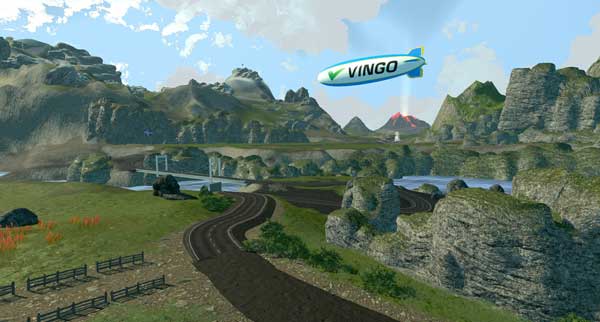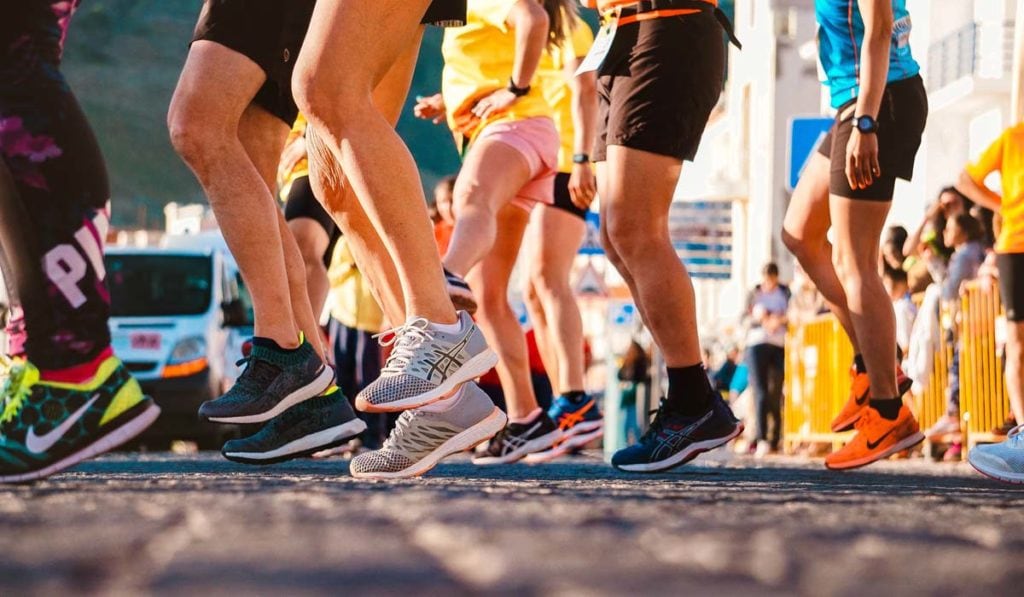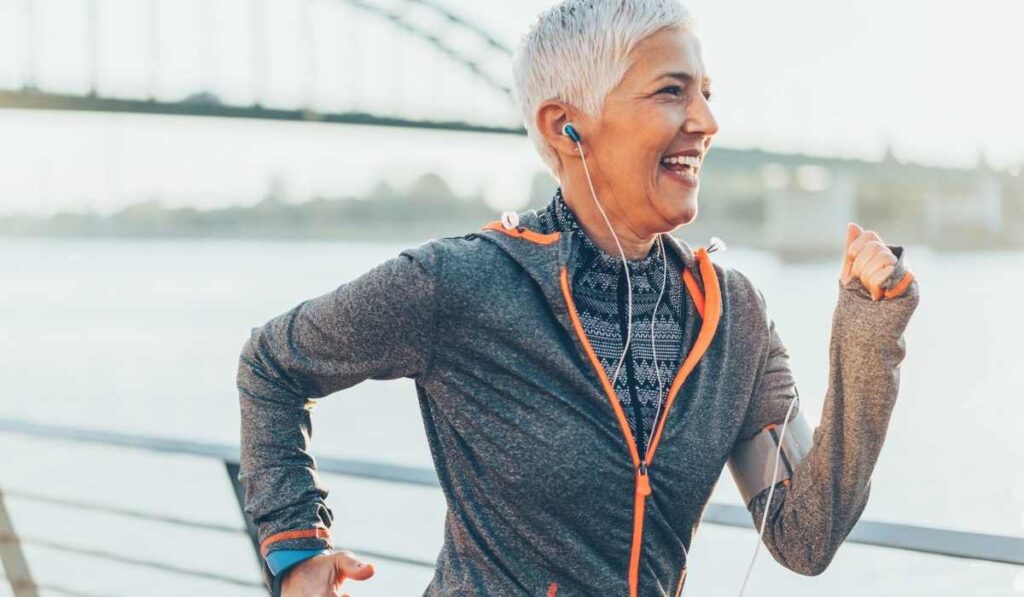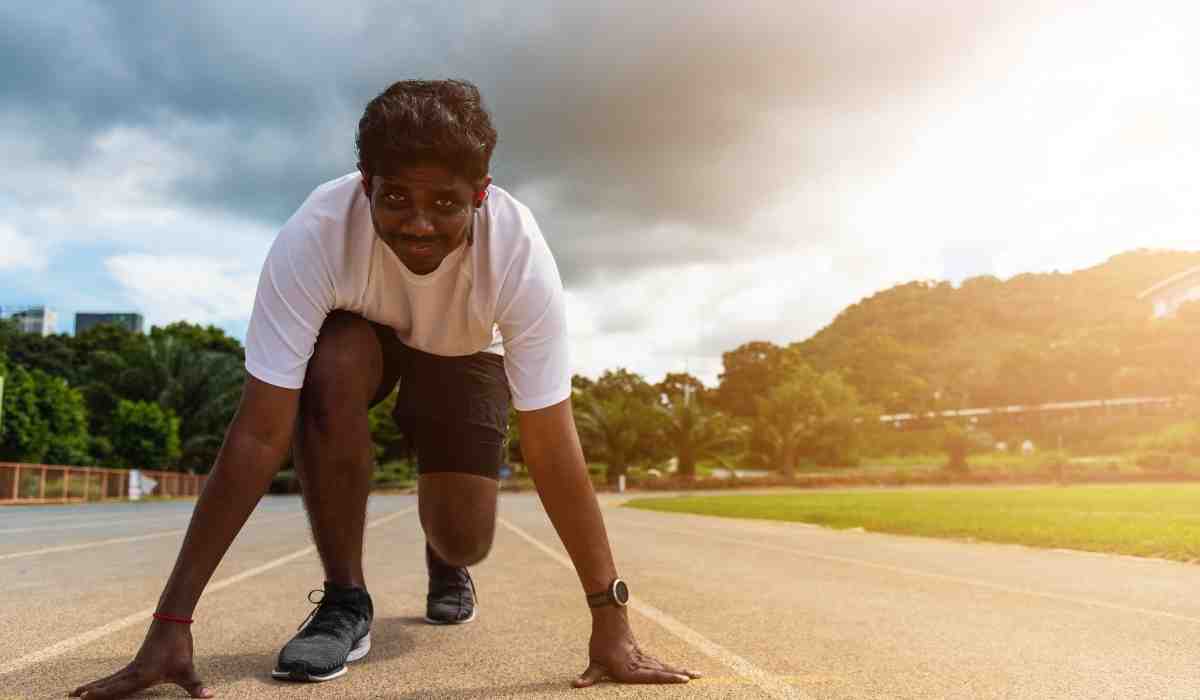
Back Pain When Running: Causes and Treatment
Lower back pain is a common complaint among avid runners. But what causes it, and how can you treat and prevent it? To help you establish a more comfortable and safe running routine, we’ll look at some of the most common causes of back pain when running, what to do if you experience this, and how to prevent it.
Why does my lower back hurt when I run?
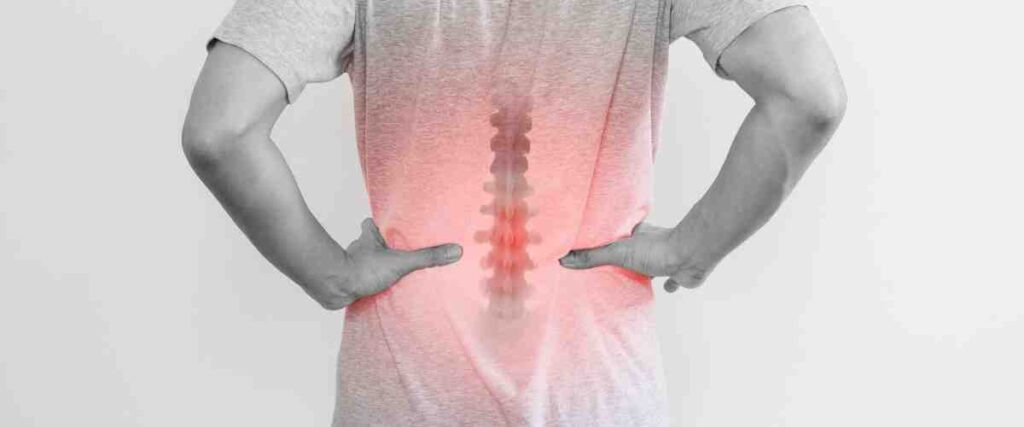
According to experts, three of the most common causes of back pain when running are:
- Poor posture and form: Lower back pain is common among runners with gait issues and poor core activation.1 Sometimes, muscle weaknesses can also contribute to poor form, but you can strengthen those muscles with specific exercises.
- Muscular imbalance: Many runners lack strength or capacity in the lower back and abdominal muscles, which makes it harder to deal with the physical stress caused by running.
- Overuse: Doing too much too soon can overload the lower back, causing pain and discomfort.
Why does my back hurt after I run?

If your back doesn’t hurt while you’re running, but you experience pain afterward, there could be several other causes.
- Wearing worn-out running shoes can cause you to run with flat feet, leading to injuries throughout the body, including your back.
- Being dehydrated can cause muscle spasms that you might feel in your lower back. Even if you drink plenty of water before and during your run, exercising in extremely hot conditions can still cause dehydration and related issues.
- Overdoing it by doing too much too soon can also cause back pain. This is especially true if you don’t take adequate time to recover and give your body a chance to heal and rebuild its muscles.
- Not warming up properly before a run can make your muscles feel tight and uncomfortable after your run. Your glutes and hamstrings are especially vulnerable, but your back and core muscles can suffer too if you don’t stretch before running.
- Weak or unbalanced lower back, hip, or abdominal muscles can cause back pain during and after running. Alternatively, if one side of your hips feels tighter than the other, not stretching correctly may also contribute to back pain after a run.
Should I keep running if my back hurts?

You don’t necessarily have to stop running if your back hurts, but you should change your routine to continue running safely and avoid further injury.2 For example:
- Make sure you warm up thoroughly before your run and cool down afterward. Warming up gives your muscles time to acclimate to the action of running, and cooling down helps your body flush out lactic acid and prevent soreness and injury.
- Buy footwear that correctly fits your feet. Get a consultation with a running shoe specialist to find shoes that fit your feet well and provide adequate support while you run. Plan to replace your running shoes every 250 miles or whenever they start to get worn down.
- Focus on improving your running form. Make sure your shoulders are back and relaxed, and hold your chest up. Take shorter, faster strides instead of very long ones, and find a foot strike that’s comfortable for you. (Most experts recommend a mid-foot-to-toe strike, but it can vary from runner to runner.)
- Avoid overtraining. Doing too much too fast can cause stress fractures and other overuse injuries.3 To prevent this, only run three or four times a week if your back hurts. If you need to cut back further, do so. Increase either your speed or distance gradually and avoid increasing both simultaneously. Just focus on one or the other. Make sure to rest at least one day a week.
If you implement these tips and your back still hurts when you run, take a few days off and give your back some time to rest and heal.
Things to do to help back pain

Many runners experience ongoing back pain that comes and goes or never seems to go away. Fortunately, there are several things you can do to get relief from running-related back pain.
Stretch, stretch, and stretch some more.
Many yoga stretches can help relieve the pressure from the joints in the spine and stretch out the lower back muscles. Some of the best yoga stretches for back pain are:
- Child’s Pose
- Pigeon
- Cow
- Half Lord of the Fishes
An inversion table can also help you get a great stretch of the spine. (An inversion table is a table you lie on with your ankles strapped in that gradually tilts you into an upside-down position, allowing gravity to stretch out your spine gently.)
It’s also a good idea to stretch out your hamstrings, calves, and hip flexors daily, not just before you head out for a run.
Use a back support belt.
If your back hurts but you want to keep running, you can give your muscles a break by wearing a lower back support belt. These belts wrap around your midsection and support your back muscles while you run to give them a chance to recover.
Although a back support belt is a great short-term solution that can help you continue running, it’s not a long-term fix for back pain. If you wear a back support belt for too long, your muscles will begin to rely on it, potentially setting you up for additional injuries once you stop using it.4 Just be cautious of this and consider asking your doctor or physical therapist how long you should wear a support belt.
Strengthen weak muscles.
Many runners have weak hamstrings and glutes, but these muscles are crucial to running performance. The following exercises can help strengthen these muscles:
- Clamshell with resistance band
- Glute bridge with resistance band
- Calf raise to heel drop
- Box squats with resistance bands
- Walking lunges
Gentle rowing exercises can also help strengthen the muscles of the upper back, which will help support your lower back.
Wear heating pads.
Studies show heat therapy is an effective treatment for back pain, and heat pads are a convenient and portable option.5 Many heating pads for your back will stay warm for hours and can ease the pain to keep you comfortable. They also promote circulation, allowing oxygen and nutrients to travel to your back muscles.
Get sports massages.
A sports massage can help alleviate pain and stiffness. It may also improve muscle flexibility and help prevent future injuries. Unfortunately, massages can be expensive and time-consuming, so they’re not ideal for everyone or a frequent treatment form. Instead, combining massages with other treatment options, like stretching, heating pads, and back support belts is best.
How to prevent back pain when running

Learning proper running form is the best way to prevent back pain and other injuries while running. Take the time to study your running form and identify areas of improvement. Even just making small changes can go a long way to preventing back pain!
Adding strength exercises to your regular exercise routine (up to two to three times per week) will also help prevent back and reduce back injuries from running. There are many excellent strength training routines and exercises for runners, but working with a trainer can help you appropriately target muscles and maintain a balanced training routine to prevent injuries.
Additionally, taking things slowly and gradually increasing how far and fast you run is the safest way to train. It’s all too easy to push yourself too hard, especially if you’re preparing for a competitive running event, but just remember that your ultimate goal is to keep running. If your back constantly hurts or you suffer from frequent overuse injuries, your ability to run and your performance will be severely compromised.
When to see a doctor

If you’ve applied the above tips, but your back pain persists, is severe, or spreads to other parts of your body, it’s time to call your doctor. Letting the pain continue too long or ignoring it could have serious consequences. Back pain could also potentially be due to underlying physical issues that need to be addressed by your doctor or a physical therapist.
But what happens when that pain isn’t in your muscles but in your groin? Groin pain after running is a surprisingly common problem and one that can be difficult to treat. But don’t worry, we’re here to help. Our blog post covers all the possible causes of groin pain after running, as well as treatment options. So if you’re dealing with this issue, head over to our post and get the information you need to start feeling better.
Key Takeaways:
Back pain is a common issue for runners, but you can take steps to prevent it. Remedies like gentle stretching and strength training, sports massages, heating pads, and support belts can help you find relief, but if the pain persists for several weeks or spreads to your calves or feet, it’s time to call your doctor.References:
- Wu, B., Chen, C. C., Wang, J., & Wang, X. Q. (2021). Incidence and Risk Factors of Low Back Pain in Marathon Runners. Pain Research and Management, 2021, 1–7. https://doi.org/10.1155/2021/6660304
- Lieberman, I., MD. (2015b, November 11). How to Run Safely with Back Pain. Sports-Health. https://www.sports-health.com/sports-injuries/running-injuries/how-run-safely-back-pain
- Lehmann, M., Dickhuth, H., Gendrisch, G., Lazar, W., Thum, M., Kaminski, R., Aramendi, J., Peterke, E., Wieland**, W., & Keul, J. (1991). Training – Overtraining. A Prospective, Experimental Study with Experienced Middle- and Long-Distance Runners*. International Journal of Sports Medicine, 12(05), 444–452. https://doi.org/10.1055/s-2007-1024711
- A. (2021, April 14). Pros and Cons of Back Support Belts. The Southeastern Spine Institute. https://southeasternspine.com/pros-and-cons-of-back-support-belts/
- Higuera, V. (2019, September 23). Heating Pads for Back Pain: Benefits and Best Practices. Healthline. https://www.healthline.com/health/heating-pad-for-back-pain


